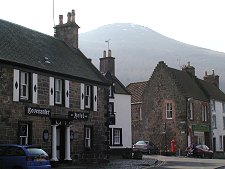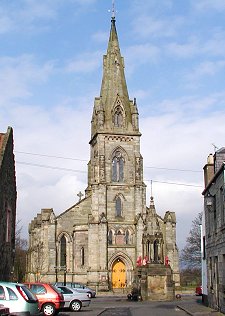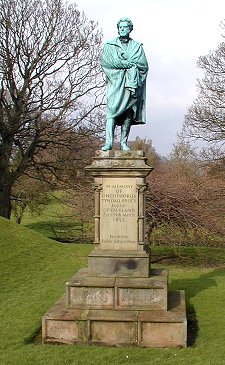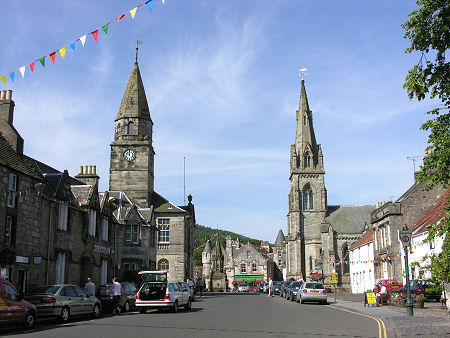 Falkland: Main Street from the East |
Take away the parked cars from Falkland's streets and it would be easy to imagine yourself transported back through its sometimes violent history. It was with good reason that Falkland was made Scotland's first conservation area in 1970: there are few other villages in the country quite so rich in wonderful old buildings.
And the most striking of them, without doubt, is Falkland Palace. This is in various stages of disrepair, but the massive twin towered gatehouse and the imposing south range remain in excellent condition and dominates the centre of the village.
Falkland holds a important place in Scotland's history. It was in Falkland Palace, that in 1402 the heir to the throne, David, the eldest son of Robert III, died while a prisoner of his uncle, the Duke of Albany. The official enquiry put this down to "divine providence". Others said David was starved to death to further his uncle's ambitions (see our Historical Timeline).
Falkland's later fortunes were closely linked with the weaving of linen. In 1792 there were 231 weavers in the village, probably about a third of the population. Other buildings in the village reflect other phases of its history, and other industries including brewing.
A walk around Falkland is a remarkable experience. It can get crowded at times. But if you catch it when it's quiet, the assembled buildings simply ooze a deep and genuine history that takes some beating anywhere. At times it is difficult to know where to look. There are no fewer than 28 listed buildings in the village.
The centre of the village is dominated by the palace gatehouse. But other fine buildings, many with towers of their own to offer, vie for attention. Our favourite was the narrow cobbled wynd we stumbled across that looks wholly unchanged over hundreds of years. And the Bruce Fountain, which effectively turns the central market place into a roundabout is extremely attractive.
And if your taste extends to hills, your attention will quickly be caught by the mass of East Lomond looming steeply over Falkland to the south-west. Its 424m summit is not high by Scottish standards, but it nicely sets off the village and provides a good balance to the dominance of the palace.
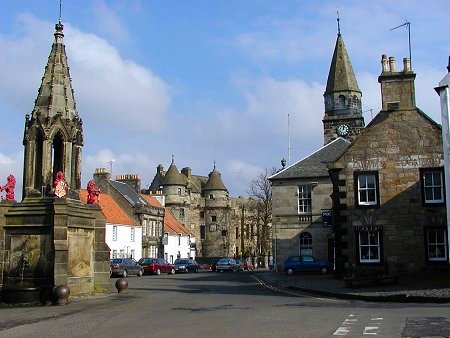 Falkland: Bruce Fountain and Falkland Palace |
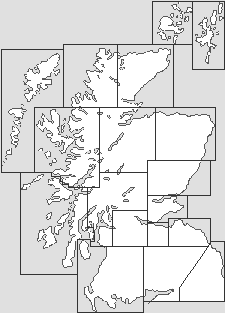
|
|
|
Visitor InformationView Location on MapWhat3Words Location: ///calms.months.slate |
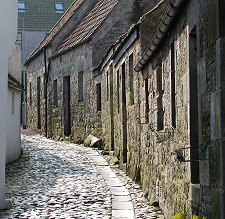 Sharp's Close in Falkland |
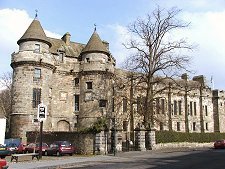 Falkland Palace |
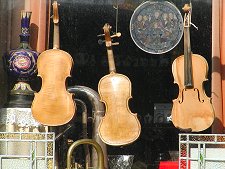 Violin Repair Shop |
